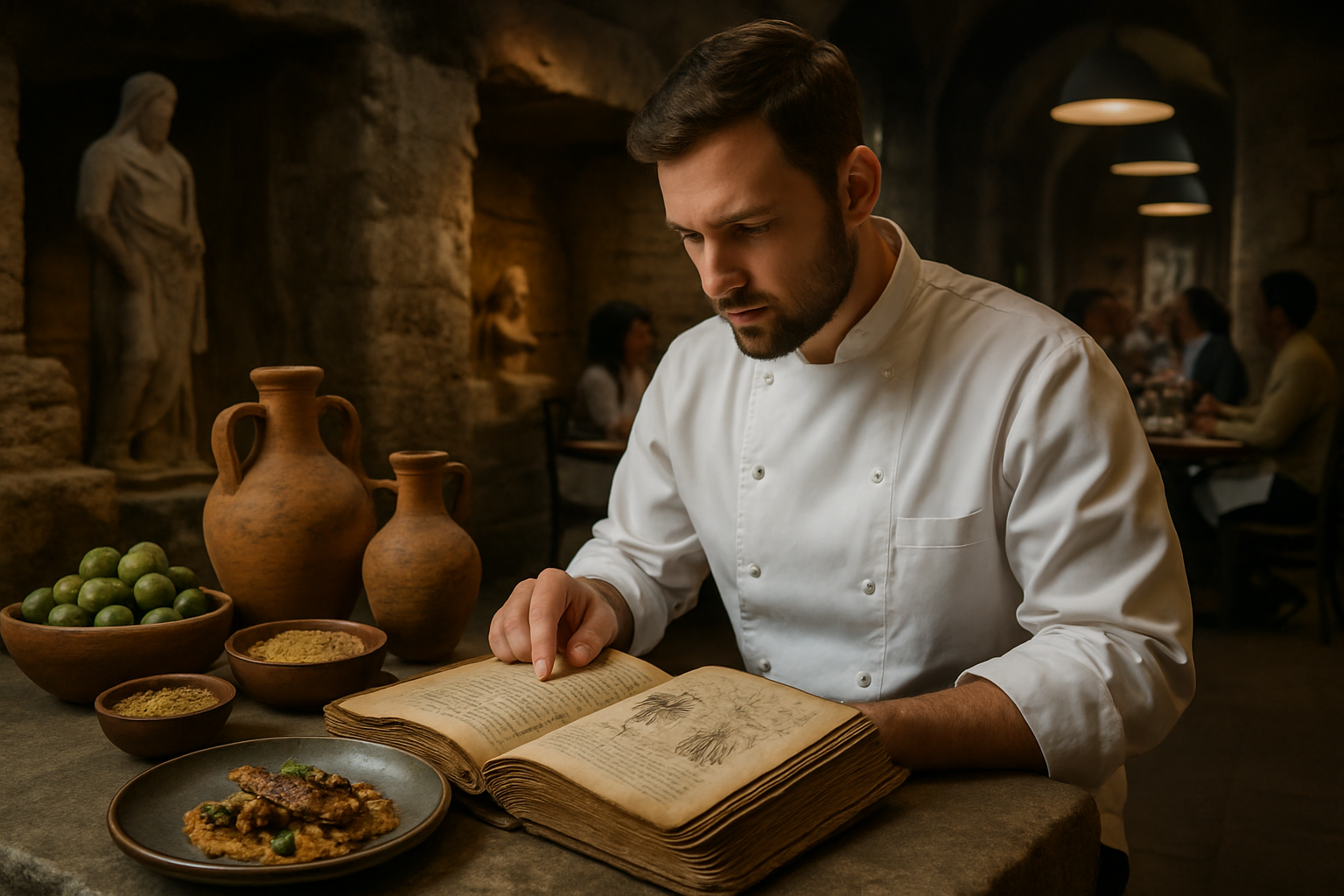Culinary Alchemy: Transforming Humble Ingredients
Unleashing the hidden potential of everyday foods through innovative techniques In the ever-evolving world of gastronomy, a new trend is taking kitchens by storm: culinary alchemy. This innovative approach transforms humble, often overlooked ingredients into extraordinary dishes that captivate both the palate and imagination. By applying creative techniques and unconventional pairings, chefs and home cooks alike are revolutionizing the way we perceive and enjoy food. From turning vegetable scraps into gourmet delicacies to reimagining common pantry staples, culinary alchemy is redefining the boundaries of cooking and challenging our preconceptions about ingredients.

Reimagining Pantry Staples
Culinary alchemy extends beyond repurposing food scraps to reimagining common pantry staples in innovative ways. Take the humble can of chickpeas, for example. While traditionally used in dishes like hummus or falafel, creative cooks are now transforming the liquid from canned chickpeas, known as aquafaba, into a versatile egg substitute for vegan baking. This viscous liquid can be whipped into meringues, used as a binder in cookies, or even incorporated into cocktails for a unique foam topping. Similarly, leftover rice can be transformed into crispy rice cakes or ground into flour for gluten-free baking. These transformations not only breathe new life into everyday ingredients but also open up a world of possibilities for those with dietary restrictions or seeking to reduce food waste.
Molecular Gastronomy Meets Home Cooking
While molecular gastronomy has long been associated with high-end restaurants and complex techniques, culinary alchemy is bringing these innovative approaches into home kitchens. Simple molecular gastronomy techniques, such as spherification or foam creation, can be achieved with readily available ingredients and basic equipment. For instance, combining calcium lactate with a sodium alginate bath can transform fruit juices into caviar-like spheres, adding a burst of flavor and visual interest to desserts or cocktails. Similarly, using a handheld milk frother to create flavored foams can elevate simple dishes to restaurant-quality creations. By demystifying these techniques and making them accessible to home cooks, culinary alchemy is empowering individuals to experiment and push the boundaries of their culinary creativity.
Fermentation: The Ultimate Transformation
Fermentation stands at the forefront of culinary alchemy, offering a way to transform simple ingredients into complex, flavorful creations. While traditional fermented foods like yogurt and sauerkraut are well-known, innovative chefs are exploring new frontiers in fermentation. For example, fermenting garlic in honey not only preserves the garlic but also creates a sweet and tangy condiment that can be used in a variety of dishes. Koji, a type of fermented rice, is being used to create unique flavors in everything from meat marinades to ice cream. Even coffee is being reimagined through fermentation, with coffee cherries being fermented before roasting to create complex, wine-like flavor profiles. These fermentation techniques not only enhance flavor but also increase the nutritional value of foods, making culinary alchemy a perfect blend of taste and health.
The Future of Flavor
As culinary alchemy continues to evolve, it promises to reshape our understanding of ingredients and cooking techniques. This innovative approach encourages us to look at our food with fresh eyes, seeing potential where we once saw waste or limitation. By embracing culinary alchemy, we open ourselves up to a world of new flavors, textures, and culinary experiences. Whether it’s transforming vegetable scraps into gourmet dishes, reimagining pantry staples, or exploring the frontiers of fermentation, culinary alchemy offers endless possibilities for creativity in the kitchen. As we move forward, this trend will likely continue to influence not only how we cook but also how we think about sustainability, nutrition, and the very nature of food itself.
Culinary Alchemy Tips & Facts
• Aquafaba can replace egg whites in many recipes, including meringues and mousses
• Leftover coffee grounds can be used as a meat rub or garden fertilizer
• Citrus peels can be candied or infused into oils and vinegars for added flavor
• Overripe bananas can be frozen and blended into “nice cream” for a healthy dessert
• Whey from homemade cheese can be used as a protein-rich liquid in bread recipes
• Herb stems can be blended into pestos or used to infuse oils and vinegars
• Watermelon rinds can be pickled or candied for a unique condiment
• Spent grain from homebrewing can be incorporated into bread or used as a meat extender
• Leftover wine can be frozen into ice cubes for future use in cooking or cocktails
• Vegetable pulp from juicing can be used to make veggie burgers or added to baked goods





